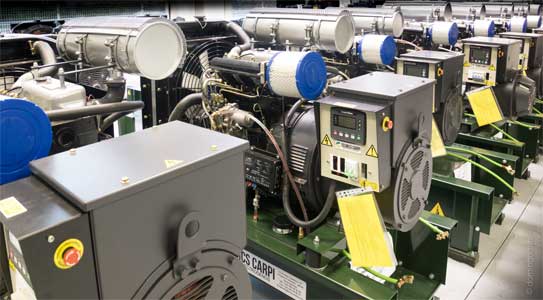Power is a vital resource in hospitals. It is required not only for the operation of medical equipment but also for lighting and heating. Generators are used to help power hospitals during emergencies. A hospital can use diesel generators, natural gas generators, microgrids, or portable generators to generate electricity.
Generators are used to help power hospitals during emergencies. Generators create an uninterrupted flow of electricity, but they can come in many different sizes and strengths to fit your particular needs.
Designing the generator room layout requires careful attention because it directly bears its safety and efficiency. Also, it must be designed to be compatible with the fuel type used by the generator so that it does not experience any interruption in power supply due to lack of fuel.
The majority of generators are powered by diesel, natural gas, or petrol/gasoline. The word “generator” can also refer to the entire machine itself.
Diesel-powered generator
Ideal for providing backup power during blackouts or brownouts. These generators can be fueled by gasoline or propane. They come with automatic transfer switches that start up the unit when there is a loss of power to the hospital’s main electricity supply.
Gas-powered generators
It is by far the most popular type of generator utilized in hospitals. They are much more efficient than the other types; they can be used outdoors and indoors and are highly flexible. Many hospitals use these generators for backup power during outages or when there is a surge in demand (which may happen after an emergency).
These generators are also helpful if you want to ensure your hospital can continue to function even if your area loses electricity for several days. They can help keep patients warm while making sure medical equipment continues to operate.
Although gas-powered generators are more expensive than other backup power systems, they are an excellent power source in emergencies. The gas they run on is portable and can be stored for long periods without maintenance.
They also don’t create much pollution when running or when they are not in use, which is a big plus for environmental impact. In addition, there is no danger of overheating with a gas generator because its engine only needs air to run properly.
However, these machines do have their downsides as well. They require regular maintenance and oil changes each month or every 500 hours of use.
Microgrids and renewable energy systems
Microgrids are an older concept that has re-emerged in the past decade. A microgrid is a small energy grid, independent of the primary grid (macrogrid), that operates with its generation and storage resources.
Hospitals are under constant pressure to reduce their carbon footprint and ensure reliable power without relying on the grid—Microgrids – small, isolated power grids that operate independently from the main supply.
The microgrid concept is well suited to meet the growing needs of hospitals. As a critical infrastructure, electricity supply in healthcare facilities must be secure and reliable and satisfy very stringent quality standards. A microgrid can provide such an environment by delivering high-quality power with almost zero emissions at costs lower than conventional hospital energy supply.
Modern hospitals are large energy users, and they often find themselves uncomfortably close to their maximum capacity for power usage. To make matters worse, many of our most important medical facilities (hospitals) are located in regions where the sun shines the brightest, which means that solar power is readily available.
The problem with renewable energy is that it’s not always reliable; when the wind isn’t blowing, or the sun isn’t shining, there’s no way to harness its benefits for your hospital’s needs. Microgrids help solve this issue.
Mobile generators
Mobile generators are usually powered by fuel such as gasoline, diesel, natural gas, or propane.
There are two types of mobile generators:
- Portable
- Stationary
Mobile generators can be used at hospitals to supply power in case of an emergency.
They are also called portable generators. They are called portable/mobile because they are easily moved around and don’t need to be permanently connected to an external power source like traditional generators do.
Some portable generators may serve as both stationary and portable power sources depending on the user’s need. They have a power rating that indicates how much load they can support continuously before being overloaded.
Conclusion: The four main generators used in hospitals are portable, standby, emergency, and mobile. Portable generators are the most common type of generator used for backup power. Standby generators can be permanently installed to provide power during a loss of utility service. Emergency generators are typically only used during emergencies such as severe weather events or other disasters. Uninterruptible power supply (UPS) systems protect computers from blackouts and brownouts by providing a constant source of electricity that helps prevent damaging surges.

